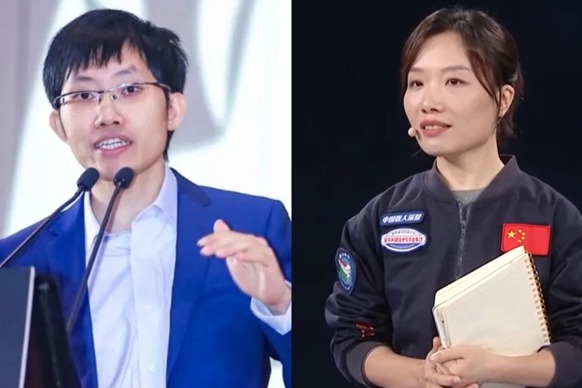Ancient child tombs found in China
Xinhua | Updated: 2017-10-17 16:11
The tombs were used to bury the remains of children, and archeologists estimate there might be 500 to 700 more such tombs in the surrounding area.
The graveyard located near the Fudi city ruins in Huanghua, Hebei, is dated between the Warring States (475-221 BC) period and the reign of Emperor Wu (156-87 BC) in the Han Dynasty.
Zhang Baogang, curator of the Huanghua city museum, said the tombs were all of the urn burial type, featuring urns made of pottery. It is the largest such burial site ever found in China.
Archeologists started to excavate the tombs and preserve the artifacts in August.
"The earthen coffins were buried 3 meters underground. Most of the skulls were well preserved because the squashed earthenware helped squeeze out oxygen," Zhang said.
He said archeologists had collected samples of the remains for lab research to determine the gender and age of the people buried. They will also carry out tests on DNA and the children's teeth.
Zhang said archeologists were curious why there were so many children buried together. Many were only two to three years old, with others just a few years older.
Skull and foot bones were separately arranged in two small pots, with the main body sections put in larger drum-like pots.
Zhang said there were composites of sea shell found in the clay earthenware. Huanghua is located on the west coast of the Bohai Sea. People accordingly used local materials for making the urns.
He said there were no other burial objects found in the tombs except some silk which decayed quickly after the tombs were opened.
The earthenware also decayed with the red ones decaying faster than the black ones.
Adults were only found in six of the tombs.
Li Jun, an archeologist from Shanxi University, said such a large child burial suggested the children were concentrated for a specific purpose.
A Chinese legend says that first emperor Qin Shi Huang sent the explorer Xu Fu to sail east and find the Peng Lai Island to seek immortality. Xu is said to have taken 5,000 children and young workers with him.
The Xu Fu legend is shared in China, Korea and Japan, and there are commemorative events held every year for the legendary explorer. In Japan he is worshipped as a deity.
Li said the ancient city of Fudi in Huanghua might have been a temporary settlement for Xu Fu's team.
He gave three possible reasons for the child deaths -- sacrifice, pandemic plague or exhaustion from hard work.
Bai Yunxiang, deputy director of the Chinese Academy of Social Sciences Institute of Archaeology, said this urn burial type appeared as early as the Neolithic period in China, with the custom spreading to the Korean Peninsula and Japan during the Warring States period.
In Japan, there are urn burial sites dating back to the Yayoi Period (300 BC-250 AD) found in Saga prefecture on the island of Kyushu.
























